The Himalayas, in their staggering majesty, are not merely mountains of rock and ice; they are the spiritual axis of the Indian subcontinent, an abode of deities and a cradle of ancient wisdom. Nestled within the colossal peaks of the Garhwal range in Uttarakhand, two sacred shrines stand as cornerstones of Hindu faith: Kedarnath and Badrinath.
They are the twin jewels of the Chota Char Dham Yatra, a pilgrimage that draws millions seeking liberation (moksha). While both are located in the same state, their geographic, mythological, and spiritual identities are distinct, reflecting the cosmic duality of preservation and dissolution championed by Lord Vishnu and Lord Shiva, respectively. To understand where they are located is to begin a journey into the heart of Devbhumi, the Land of the Gods.
If you’re planning your Kedarnath trip package or Char Dham tour package, understanding the exact location, accessibility, and significance of these two destinations is essential. This comprehensive word guide will take you through everything you need to know about where Kedarnath and Badrinath are located, their spiritual and geographical importance, how to reach them, the best time to visit, and what to expect during your pilgrimage.
We’ll also explore the history, culture, and natural beauty surrounding these sacred sites, ensuring you’re fully prepared for a meaningful and memorable journey.

Where Is Kedarnath?
Geographical Bedrock and Altitude
Kedarnath is situated in the Rudraprayag district of Uttarakhand, India. It is perhaps the most remote and geographically challenging of the four Chota Char Dhams. The temple and the surrounding township rest on a barren, majestic plateau high in the Garhwal Himalayas. Its coordinates place it at a striking elevation of 3,583 meters (11,755 feet) above sea level. This extreme altitude is a testament to the devotion required to reach the shrine.
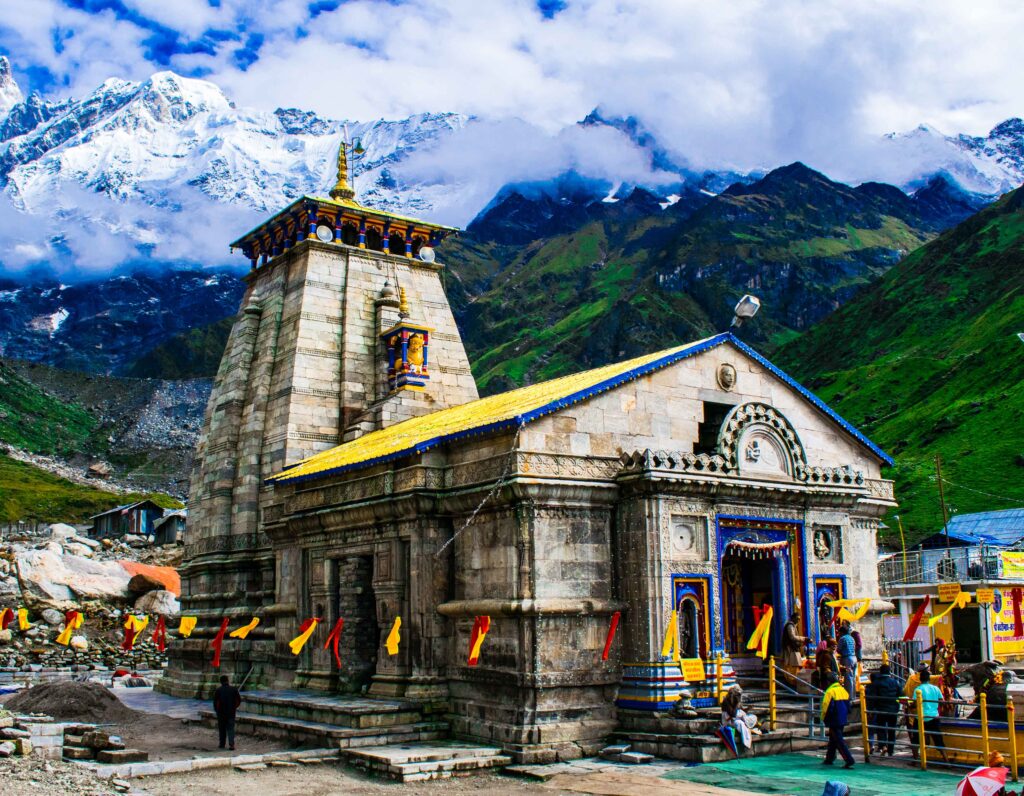
The town is flanked by colossal, snow-capped peaks, most notably the towering Kedarnath peak (6,940 m) and the Kedar Dome (6,831 m). The entire valley is a part of the Kedarnath Wildlife Sanctuary, a protected area known for its unique Himalayan flora and fauna, including the elusive snow leopard and musk deer. The rugged terrain means the temple is not directly accessible by road. The journey culminates in a mandatory 16-kilometer uphill trek from Gaurikund, the last motorable point, making the pilgrimage a true act of physical and spiritual penance.
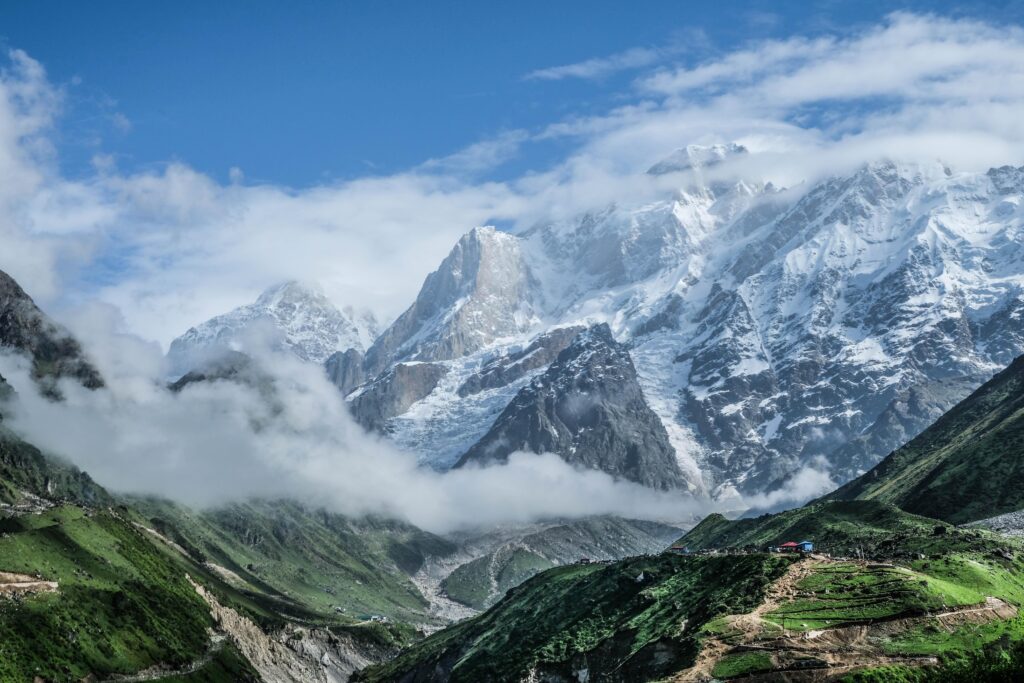
The Flowing Life: Mandakini River
A crucial geographical marker for Kedarnath is the Mandakini River. The temple stands proudly on its banks. This river is a tributary of the Alaknanda and traces its source back to the Chorabari Glacier, which lies upstream of the town. The confluence of this pristine, turbulent river with the spiritual setting enhances the raw, untamed power associated with Lord Shiva. The name of the region, Kedar Khand, literally translates to “the region of Kedar,” an ancient title that attests to its spiritual pre-eminence.
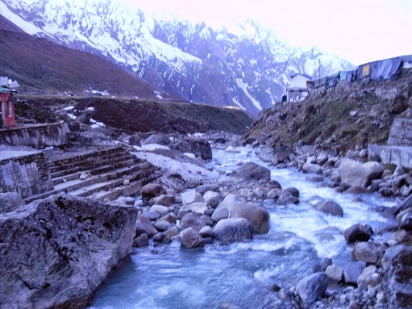
Mythological Positioning: The Hump of the Buffalo
Kedarnath’s location is defined by a deep-seated mythology involving the Pandavas of the epic Mahabharata. After the devastating Kurukshetra war, the Pandavas sought Lord Shiva to atone for the sin of killing their kin. Shiva, in an attempt to elude them, took refuge in the Garhwal mountains in the form of a buffalo. When the Pandavas pursued him, he submerged himself into the ground. The location where his hump remained on the surface is consecrated as the Kedarnath shrine. This mythology establishes Kedarnath as the first of the Panch Kedar, where the other body parts of the buffalo manifested at four other distinct, high-altitude locations (Tungnath, Rudranath, Madmaheshwar, and Kalpeshwar).
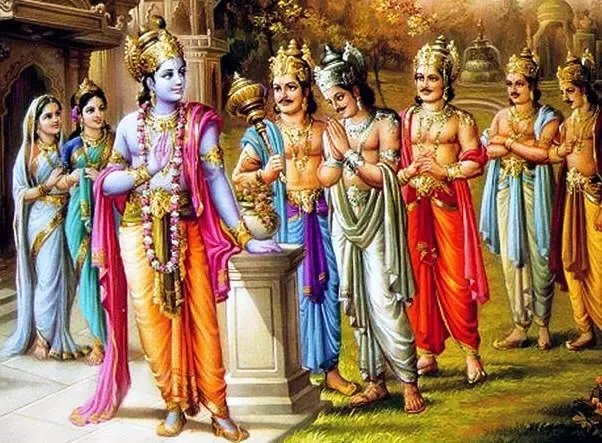
Unique Architectural Resilience
The architecture of the Kedarnath temple is a marvel of ancient engineering, perfectly adapted to its perilous location. It is built of massive, uniformly cut grey stone slabs, interlocked with such precision that no cement or mortar was required. This robust construction is credited with the temple’s survival during the devastating 2013 flash floods. The sanctum sanctorum houses a unique, naturally formed, conical rock formation that is worshipped as the Jyotirlinga, or the lingam of light. The temple’s structure follows the classic North Indian Nagara style, standing on a large, sturdy platform.
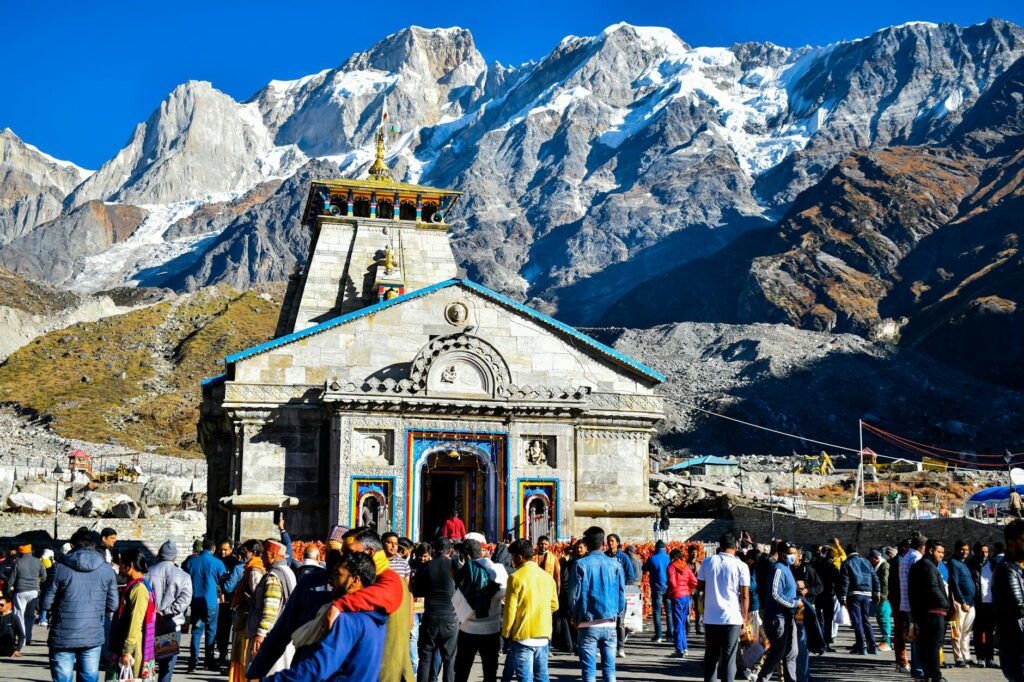
Badrinath: The Abode of the Divine Preserve
Geographical Sentinel and Accessibility
Badrinath is geographically located in the Chamoli district of Uttarakhand, making it distinct from Kedarnath. It sits at a lower altitude compared to its counterpart, at approximately 3,133 meters (10,279 feet) above sea level. This difference in elevation contributes to a slightly less arduous journey.

Badrinath is the only one of the Chota Char Dhams that is directly accessible by road, with the main road terminating right in the town center, in close proximity to the temple entrance. This accessibility makes it the final and often the most frequented stop on the Char Dham pilgrimage circuit.
Flanked by Mythical Peaks and a Holy River
The Badrinath town is picturesquely cradled between two mountain ranges that hold profound mythological significance: the Nar Parvat and the Narayan Parvat. The tallest peak forming a breathtaking backdrop is the majestic, perpetually snow-covered Neelkanth Peak.
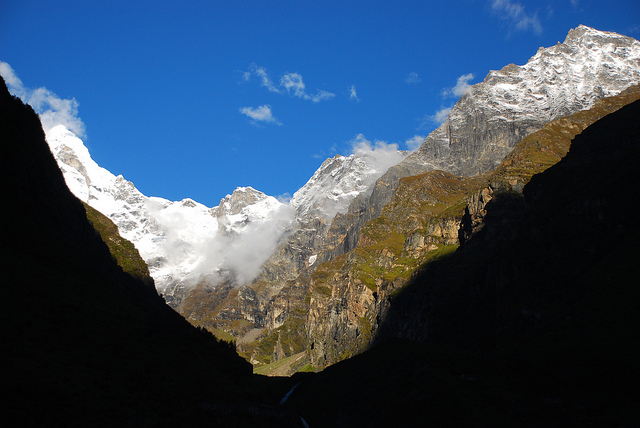
Flowing beside the temple is the holy Alaknanda River, one of the two main headstreams of the Ganges. The presence of the Alaknanda, with its serene yet powerful current, lends a profound tranquility to the valley, symbolizing the peaceful, preserving nature of Lord Vishnu. A major attraction, unique to Badrinath, is the Tapt Kund, a natural hot sulfur spring located just below the temple and fed by the geothermal heat of the region. Pilgrims bathe here before entering the shrine, believing its hot waters cleanse them of sins, a stark contrast to the glacial cold of the surrounding environment.
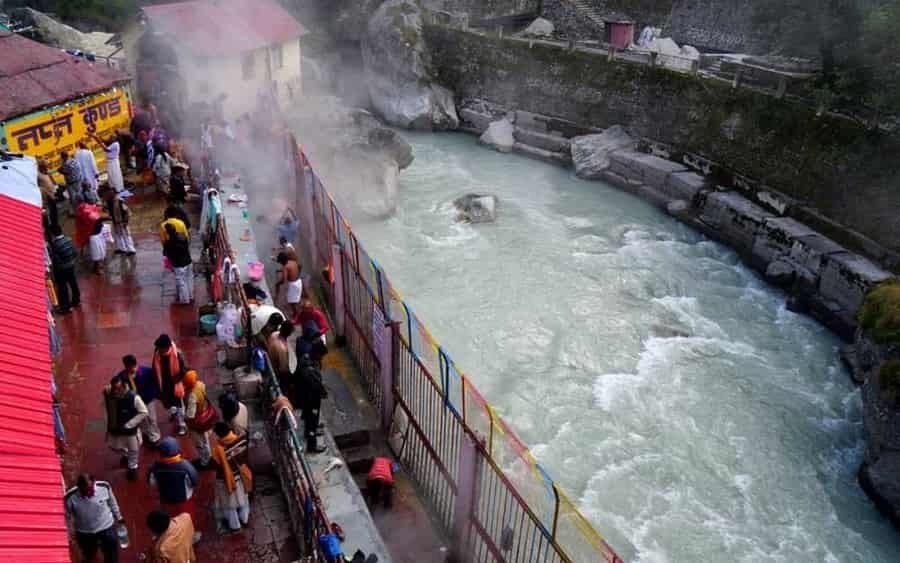
Mythological Positioning: The Badri Tree and Adi Shankaracharya
The name Badrinath is derived from the Badri (jujube or Indian date) tree. Legend holds that Lord Vishnu meditated here for thousands of years. Unaware of the harsh cold, his consort Goddess Lakshmi took the form of the Badri tree to shelter and warm him. Pleased by her devotion, Vishnu named the place Badrika Ashrama.

Historically, the temple’s revival is strongly attributed to the 8th-century philosopher-saint, Adi Shankaracharya. He is believed to have discovered the idol of Badrinarayan (Lord Vishnu) in the Alaknanda River and re-enshrined it in a cave near the Tapt Kund before the current temple structure was built. This act was pivotal in reinstating the worship of Lord Vishnu in the region. Badrinath is also esteemed as one of the 108 Divya Desams, the holiest abodes of Vishnu across the Indian subcontinent, marking its unique Vaishnavite significance.

Distinctive Temple Architecture
The Badrinath temple structure is visually distinct from Kedarnath. It has a brightly colored, tiered roof and a golden spire, often described as resembling a Buddhist Vihara (monastery), an architectural style attributed to its evolution from a possible former Buddhist shrine to the Hindu temple as it stands today. The temple’s facade is highly intricate. The main idol of Lord Vishnu, known as Badrinarayan, is a one-foot-tall image carved from black granite (Saligram) and is uniquely depicted seated in a meditative posture (Padmasana). The complex is surrounded by smaller shrines and structures, including the Brahma Kapal, a flat platform near the river, considered a sacred spot for performing rites for departed ancestors.

The Axis of Faith: Connecting the Dots
Though separated by approximately 215 kilometers by road and distinct in their worship, Kedarnath and Badrinath are inextricably linked in the Hindu pilgrimage tradition. Their location in the same northern state of Uttarakhand, deep within the Garhwal Himalayas, represents the harmonious duality of the Hindu trinity:
- Kedarnath (Rudraprayag district): Dedicated to Lord Shiva (The Destroyer). Its rough, challenging trek and desolate setting embody the rugged, ascetic nature of Shiva. The Jyotirlinga symbolizes the raw, unmanifested energy of the divine.
- Badrinath (Chamoli district): Dedicated to Lord Vishnu (The Preserver). Its comparatively easier access and the presence of the hot springs and the Alaknanda’s flow symbolize the compassionate and nourishing nature of Vishnu. The seated idol depicts Vishnu in a state of tranquil preservation.
To complete the Chota Char Dham Yatra visiting Yamunotri, Gangotri, Kedarnath, and Badrinath—is to traverse the entirety of this sacred land, seeking blessings from the sources of the holy rivers and the presiding deities. The pilgrim’s journey to the high-altitude, snow-bound shrine of Kedarnath and then onward to the relatively softer valley of Badrinath is a symbolic pilgrimage from the wilderness of worldly existence to the peace of spiritual liberation.
The enduring location of these temples, perched in the high altitudes of the Devbhumi, stands as a timeless testament to human faith, architectural brilliance, and the profound, inseparable connection between the divine and the breathtaking grandeur of the Himalayas. They are not merely places on a map; they are the geographical centers of an ancient, vibrant civilization. or a seasoned traveler, a well organized package ensures a safe, seamless, and spiritually enriching journey.
How to Reach Kedarnath
Reaching Kedarnath requires careful planning, as the final stretch involves either a challenging trek or a helicopter ride. Here are the most common ways to reach this sacred destination:
1. By Road
Most pilgrims begin their journey from Haridwar or Rishikesh, both of which are well connected by rail and road to major cities like Delhi, Mumbai, and Kolkata. From Haridwar or Rishikesh, you can take a taxi or bus to Gaurikund, the base camp for the Kedarnath trek.
The road journey passes through scenic towns like Devprayag, Rudraprayag, and Sonprayag, offering breathtaking views of the Himalayas and the Mandakini River. The total distance from Haridwar to Gaurikund is approximately 220–240 kilometers and takes about 8–10 hours by road.
2. By Helicopter
For those who cannot undertake the 14 kilometer trek, helicopter services are available from Jolly Grant Airport near Dehradun or from Phata and Sonprayag. These flights take about 15–20 minutes and offer a bird’s eye view of the mountains, making them a popular choice for elderly pilgrims, families, and those with limited time.
Many Kedarnath trip packages include helicopter bookings, priority darshan slots, and return transfers, making the journey hassle free.
3. By Trek
The 14 kilometer trek from Gaurikund to Kedarnath temple is a spiritual and physical challenge that takes 6–8 hours on average. The trail winds through lush forests, rocky paths, and river crossings, with stunning views at every turn.
Ponies, palanquins (doli), and porters are available for those who need assistance. The trek is doable for anyone with moderate fitness, and the sense of accomplishment upon reaching the temple is unparalleled.
Key Landmarks on the Way to Kedarnath
The journey to Kedarnath is as meaningful as the destination itself. Along the route, you’ll pass through several spiritually and naturally significant places:
1. Gaurikund
Believed to be where Goddess Parvati meditated to win Lord Shiva’s heart, Gaurikund is the starting point of the trek. It has hot water springs where pilgrims take a ritual bath before beginning their ascent.
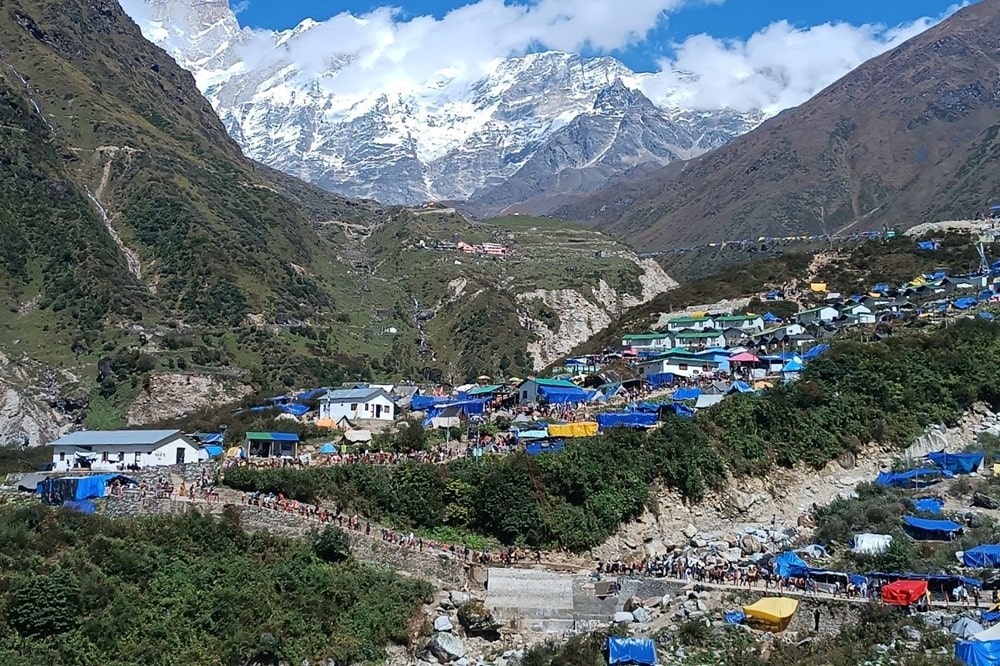
2. Sonprayag
Located at the confluence of the Mandakini and Basuki rivers, Sonprayag is a peaceful stop with views of the surrounding peaks. It’s also a key point for helicopter services and a popular rest spot for travelers.

3. Guptkashi
Known as “Kashi of the Mountains,” Guptkashi is home to ancient Shiva temples, including the Bhairavnath Temple and Mansa Devi Temple. It’s a great place to rest, reflect, and soak in the spiritual energy of the region.
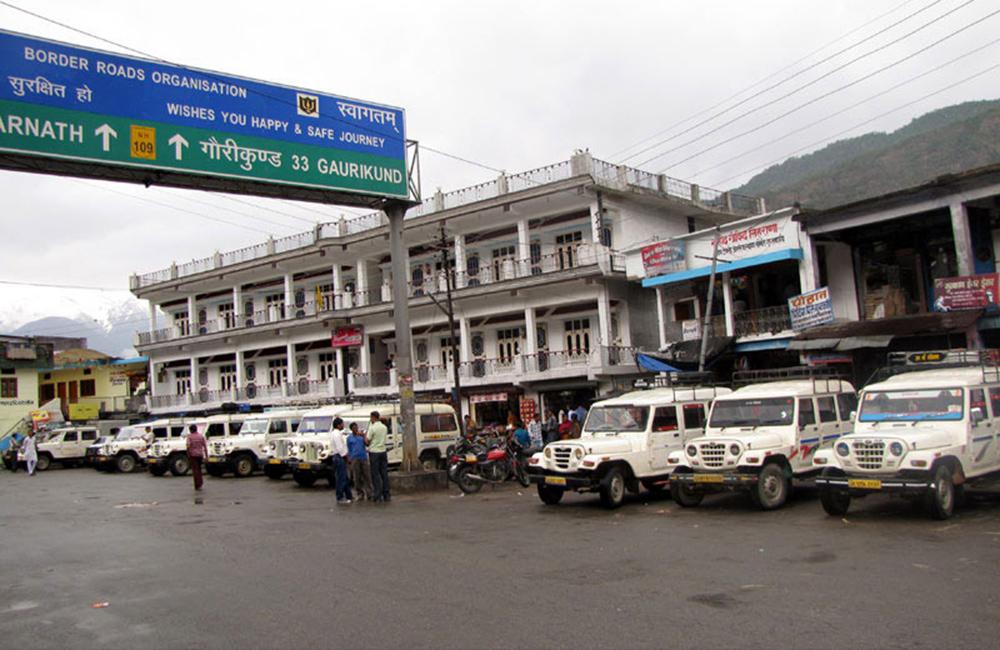
4. Chorabari Tal (Kedarnath Lake)
A glacial lake located about 3 kilometers from the Kedarnath temple, this serene spot is believed to be the bathing place of Lord Shiva. It’s a popular destination for trekkers and photographers.
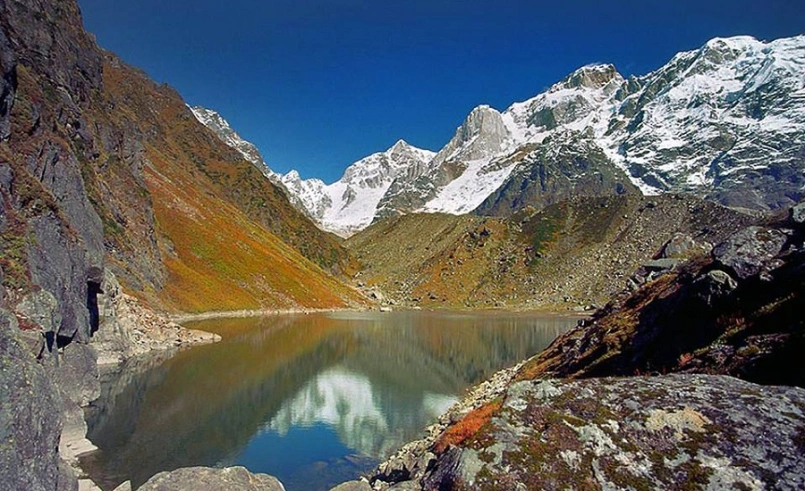
5. Bhairavnath Temple
Situated just 1 kilometer from Kedarnath, this temple is dedicated to a fierce form of Shiva and is often visited after darshan at the main temple.

How to Reach Badrinath
Reaching Badrinath is slightly easier than Kedarnath, as the temple is accessible by road. However, the journey still requires careful planning due to the mountainous terrain and weather conditions.
1. By Road
From Haridwar or Rishikesh, the road to Badrinath passes through Devprayag, Rudraprayag, Chamoli, and Joshimath. The total distance is approximately 300 kilometers and takes about 12–14 hours by road.
The route offers breathtaking views of the Himalayas and the Alaknanda River. Many Char Dham tour packages include comfortable stays in towns like Pipalkoti and Joshimath to break the journey.
2. By Helicopter
Helicopter services are available from Jolly Grant Airport and Phata, offering a quicker and more comfortable option for elderly or time constrained pilgrims.
3. By Trek
While the main temple is accessible by road, there are several short treks nearby, such as:
- Vasundhara Falls (2 km from Badrinath)
- Mana Village (the last inhabited village before the Tibet border)
- Brahma Kapal (a site for ancestral rituals)
Key Landmarks on the Way to Badrinath
1. Joshimath
A major stop on the way to Badrinath, Joshimath is a hill station and spiritual center. It’s also the winter abode of the Badrinath deity.
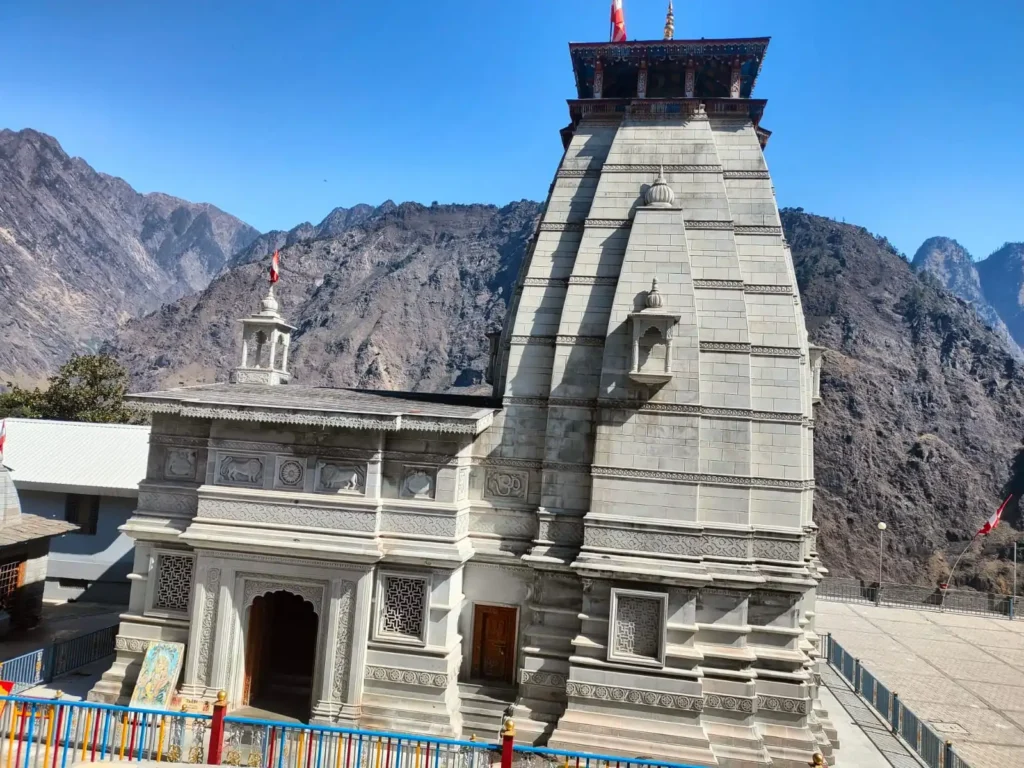
2. Mana Village
Located just 3 kilometers from Badrinath, this is the First Indian village Mana before the Tibet border. It’s home to Vyas Gufa, Gandhi Sarovar, and Surya Kund.
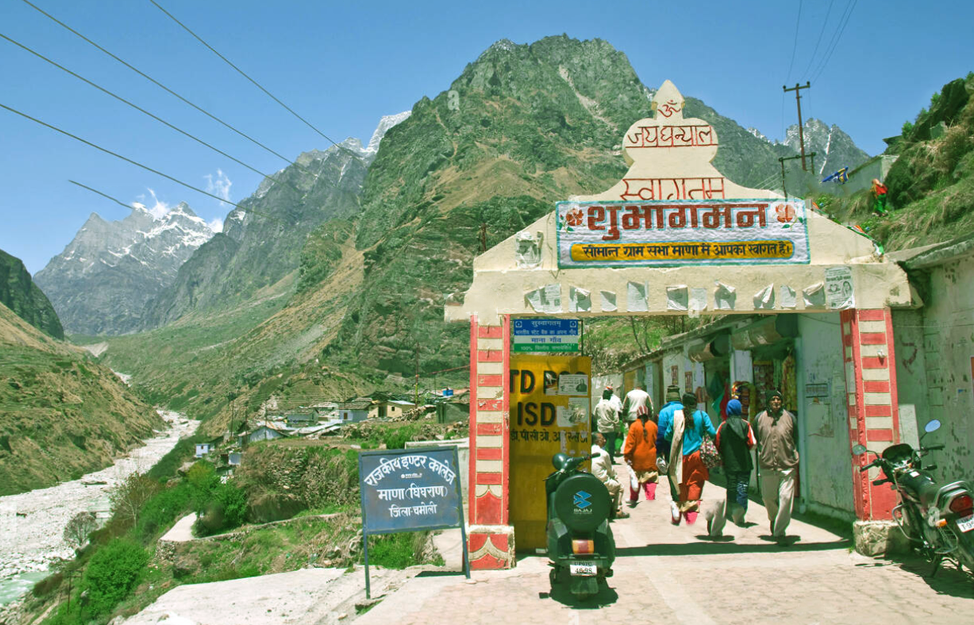
3. Vasudhara Falls
A beautiful Vashudhara waterfall surrounded by lush greenery, this spot is believed to be where the sage Narada received divine knowledge.
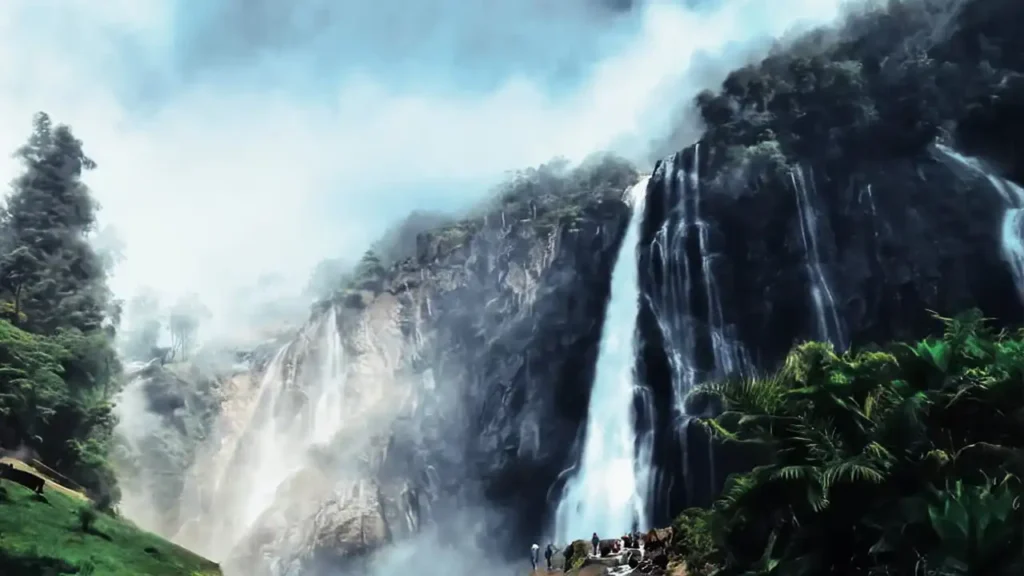
4. Brahma Kapal
A sacred site on the banks of the Alaknanda River where rituals for ancestors are performed.
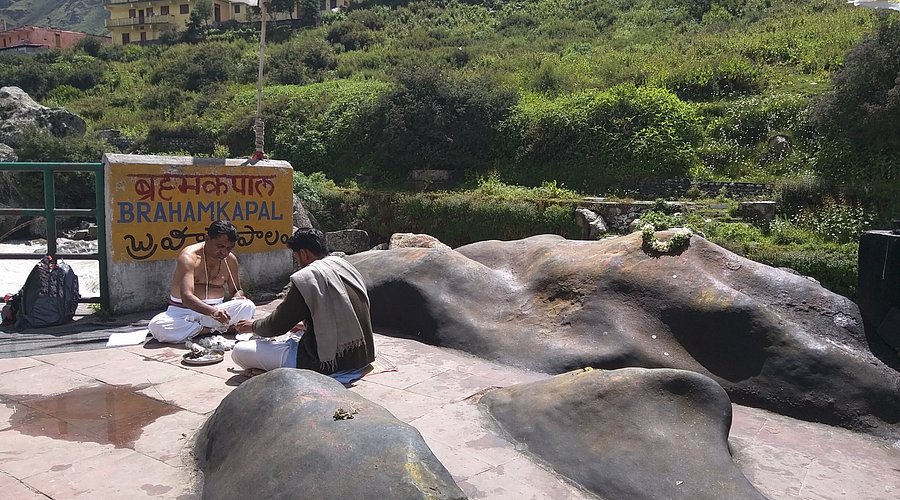
Best Time to Visit Kedarnath and Badrinath
The ideal time to visit both Kedarnath and Badrinath is during two main seasons:
1. Summer (May to June)
- Pleasant weather with temperatures between 10°C and 20°C.
- Clear skies and stable conditions.
- Peak pilgrimage season — expect large crowds.
2. Autumn (September to October)
- Post monsoon freshness with clean air and lush greenery.
- Fewer crowds and comfortable temperatures.
- Ideal for photography and trekking.
Avoid:
- Monsoon (July to mid September): Heavy rainfall increases the risk of landslides.
- Winter (November to April): Both temples are closed due to snowfall.
Booking your Kedarnath trip package or Char Dham tour package during the shoulder months (late May or September) can help you avoid the rush while enjoying favorable weather.
Where to Stay During Your Pilgrimage
Accommodation options range from basic guesthouses to luxury hotels, depending on the location and package type.
Kedarnath
- Limited options near the temple.
- Most pilgrims stay in Gaurikund or Sonprayag.
- Tented camps and lodges are available.
Badrinath
- Wide range of hotels, from budget to luxury.
- Popular areas: Badrinath town, Pipalkoti, and Joshimath.
- Many Char Dham Yatra packages include comfortable stays with meals.
Always carry warm clothing, as nights can be extremely cold even in summer.
Safety Tips for the Char Dham Yatra
- Acclimatize Gradually: Spend a day in Rishikesh or Haridwar to adjust to the altitude.
- Stay Hydrated: Drink plenty of water to avoid dehydration and altitude sickness.
- Avoid Alcohol and Smoking: These can worsen altitude effects.
- Travel with a Guide: Especially if you’re unfamiliar with the terrain.
- Follow Local Advice: Heed warnings about weather and road conditions.
- Carry Emergency Contacts: Save local helpline numbers and your tour operator’s details.
- Respect Nature: Avoid littering and follow eco friendly practices.

Frequently Asked Questions (FAQ)
What is included in a Kedarnath trip package?
Most packages include transportation, accommodation, meals, permits, and guided support.
How long does the Char Dham Yatra take?
Typically 10 to 16 days, depending on the pace and mode of travel.
Is the yatra suitable for senior citizens?
Yes, with proper planning. Many packages offer helicopter services.
Do I need to register for the yatra?
Yes, all pilgrims must register online through the official Uttarakhand tourism website.
What documents are required?
Government issued photo ID
Medical certificate (for senior citizens)
Registration confirmation
Are there medical facilities on the route?
Yes, basic medical camps are set up by the government and tour operators.
Can I customize my tour package?
Yes, many operators offer customizable itineraries.
What is the average cost of a Char Dham Yatra package?
Budget: ₹25,000 – ₹40,000 per person
Deluxe: ₹40,000 – ₹70,000 per person
Luxury: ₹70,000+ per person
Is food included in the package?
Most packages include vegetarian meals.


